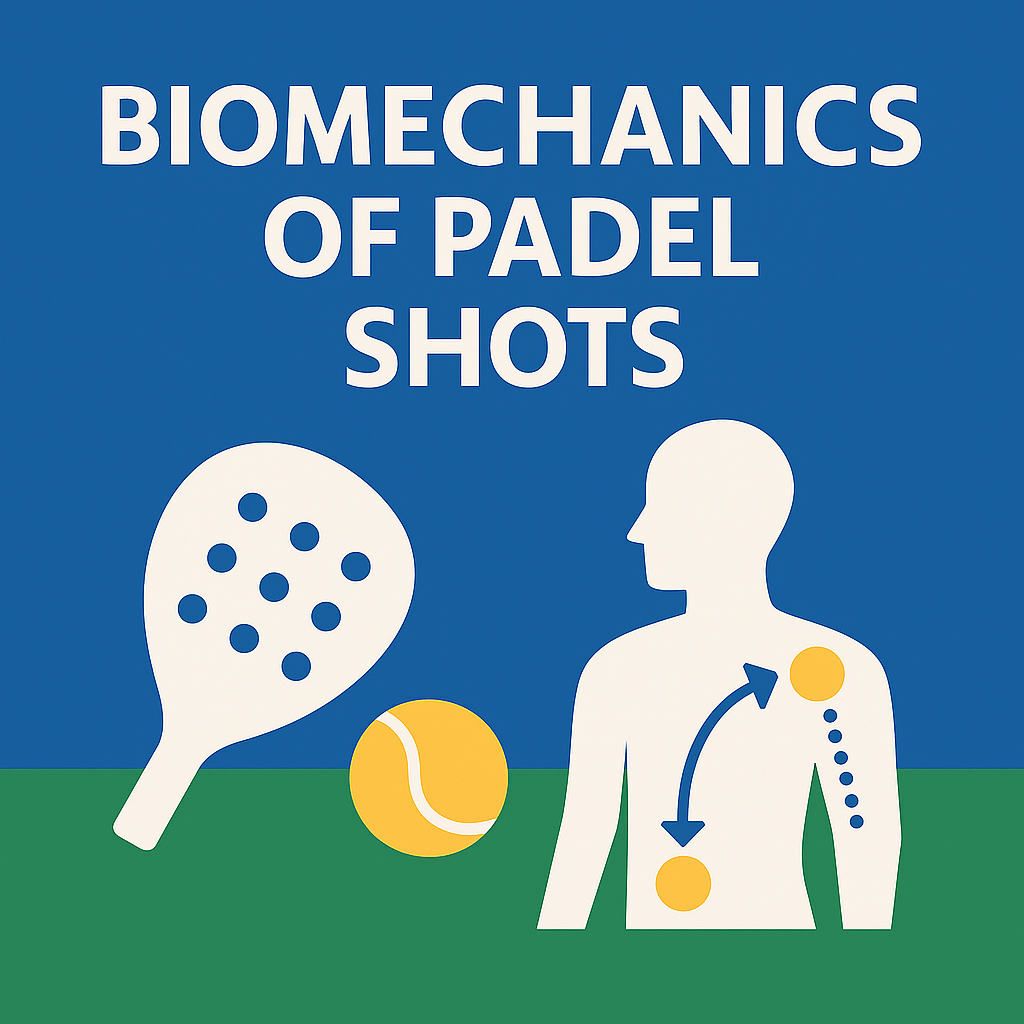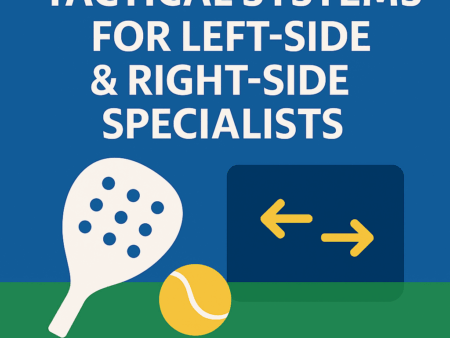
Elite padel players generate effortless power, precision, and consistency because they use efficient biomechanics. Understanding how the body produces force, transfers energy, and stabilises movement is key for both performance and analysis.
This guide breaks down the biomechanics of every major padel shot — and how elite players optimise them.
🟦 Why Biomechanics Matter More in Padel
Padel is played in a confined court with walls, meaning:
✔ shorter reaction times
✔ frequent off-balance movements
✔ overhead dominance
✔ rapid acceleration/deceleration cycles
Biomechanics determine:
• shot quality
• injury prevention
• power generation
• control under pressure
🟩 1. The Kinetic Chain (Foundation of All Power)
Padel power does NOT come from the arm.
It comes from a ground-up energy chain:
✔ Legs → Hips → Torso → Shoulder → Arm → Wrist
Elite players maximise power by:
• engaging the legs before striking
• rotating the hips to load energy
• using torso twist to accelerate
• keeping a loose wrist until impact
Non-elite players skip steps → resulting in weak or inconsistent shots.
🟨 2. Biomechanics of the Serve
The padel serve is a low-contact, high-control movement.
Key biomechanical elements:
- Weight transfer from back foot to front
- Hip alignment to open the body
- Racket drop behind the ball to control slice
- Shoulder rotation for spin
- Contact point in front of the body
Elite servers create:
✔ heavy slice
✔ deep, low bounces
✔ difficult returns to attack
🟥 3. Biomechanics of the Volley
Volleys are compact, stable, and explosive.
Elite mechanics:
- Strong athletic stance
- Minimal racket backswing
- Short punch motion
- Stable wrist, firm racket face
- Weight forward on impact
Efficiency > strength.
🟦 4. Biomechanics of the Bandeja
The bandeja is a defensive overhead used to keep the net.
Critical biomechanics:
- Side-on stance for balance
- High elbow position
- Circular backswing
- Open racket face
- Contact at eye level
- Forward torso rotation
Bandeja efficiency determines whether a team holds or loses net control.
🟧 5. Biomechanics of the Vibora
The vibora is an offensive spin overhead.
Key mechanics:
- Aggressive hip rotation
- Fast racket whip
- Closed racket face
- Contact slightly in front of the body
- Heavy slice-topspin mix
This creates:
✔ sidewall bounce
✔ low exit trajectory
✔ immediate pressure on opponents
🟫 6. Biomechanics of the Smash (Flat, Topspin, X3)
The smash is the signature power shot of padel.
Power generation relies on:
- Leg drive (jump or extension)
- Full hip & torso rotation
- Deep racket drop (“scratch the back”)
- Loose arm acceleration
- High, extended contact point
- Wrist snap for final acceleration
Smash Variations:
- Flat smash → pure speed
- Topspin smash → high bounce, kick off wall
- X3 smash → optimal height + angle
Biomechanics change depending on desired outcome.
🟥 7. Biomechanics of the Lob
The lob is a defensive reset shot.
Mechanics:
- Knee flexion to lift ball
- Smooth upward racket path
- Long contact zone
- Slow acceleration
- High follow-through
Elite players control height + depth, not just height.
🟦 8. Biomechanics of Wall Play
The glass presents unique biomechanics:
Key elements:
- Early preparation
- Low centre of gravity
- Patience (let the ball fall)
- Compact backswing
- Weight transfer forward
Wall specialists use footwork + timing, not strength.
🟩 9. Footwork and Movement Mechanics
Movement generates the conditions for elite shot-making.
Essential mechanics:
- Split step before opponent contact
- Side shuffles (not crossing steps)
- Fast recovery after overheads
- Small adjustment steps near the net
- Cross-over acceleration on lobs
Elite players never stop moving.
🟨 10. Energy Efficiency & Injury Prevention
Biomechanics protect the body.
Poor technique leads to:
❌ shoulder injuries
❌ elbow strain
❌ lower-back overload
❌ knee wear
Efficient biomechanics:
✔ reduce fatigue
✔ increase power
✔ improve consistency
🟧 Practical Tips for Analysts, Coaches & Players
✔ Watch hip rotation to judge power potential
✔ Study elbow height on overheads
✔ Look at footwork before wall shots
✔ Observe wrist stiffness/looseness in volleys
✔ Analyse timing instead of racket speed
Biomechanics predict performance and future success.
🟩 Summary
Biomechanics determine how padel players:
- produce power
- maintain control
- reduce errors
- avoid injuries
- outperform physically stronger opponents
Understanding the kinetic chain, shot mechanics, and movement patterns gives coaches, players, and analysts a deep advantage.
Next: Page 3 — Advanced Data Science in Padel Betting.


